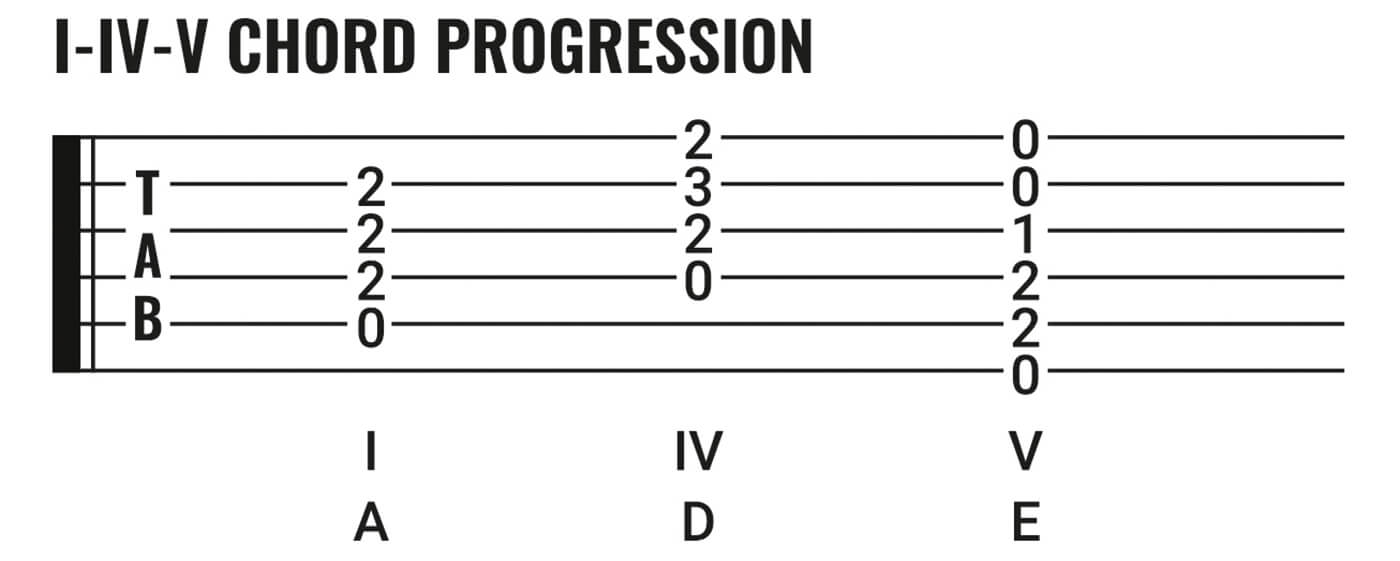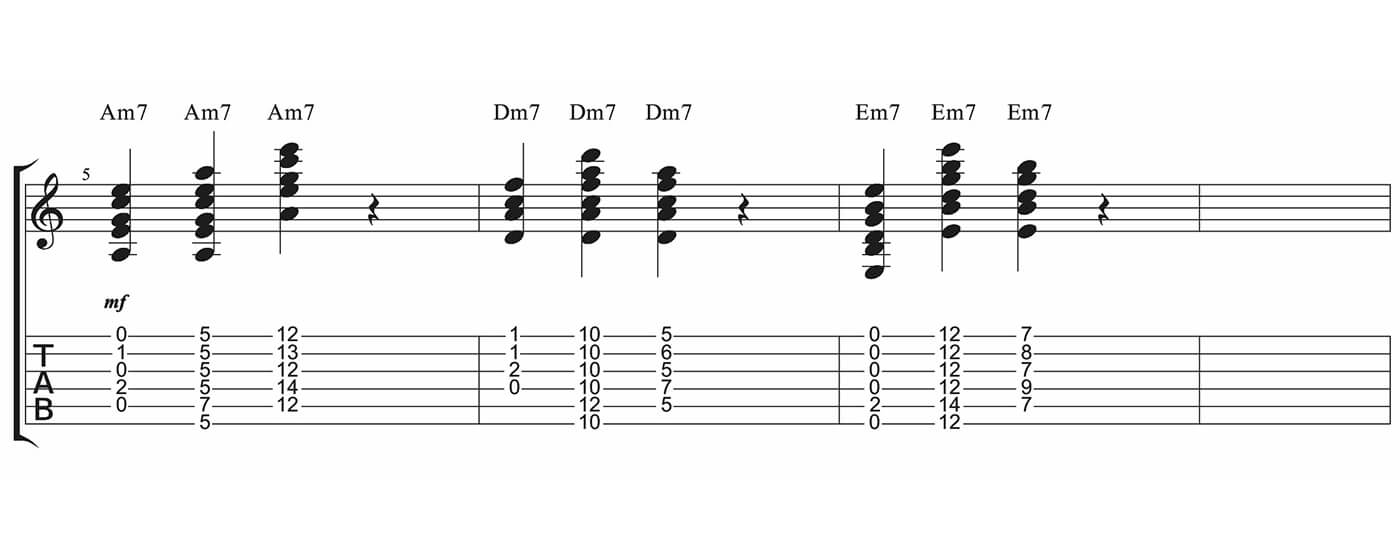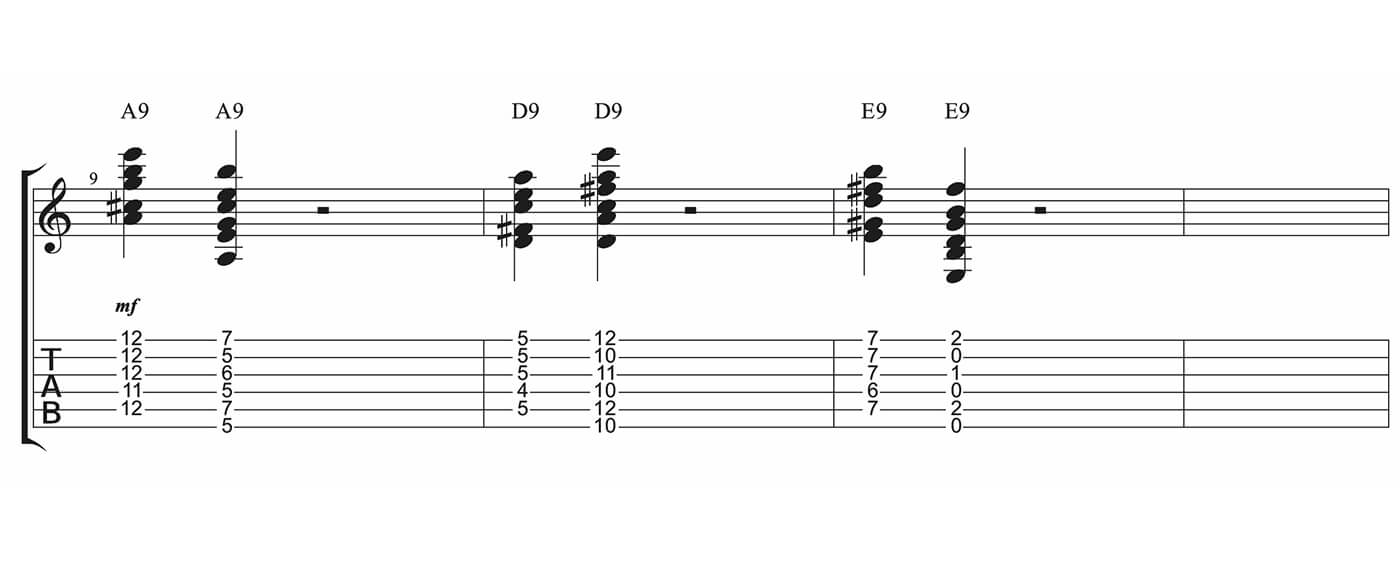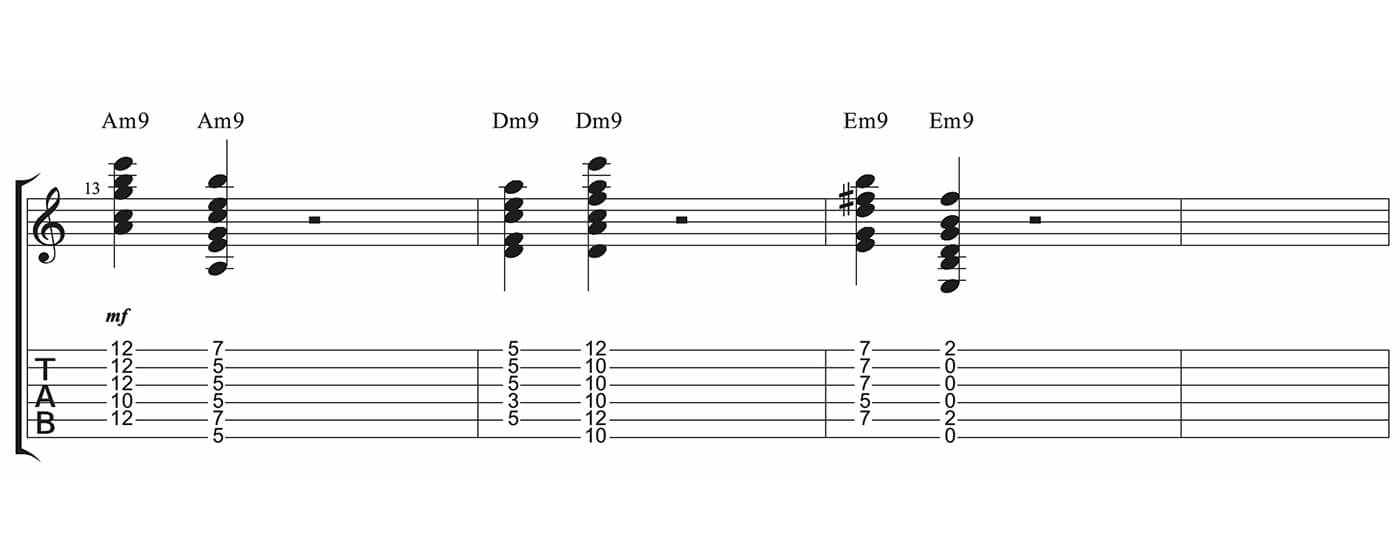Related Tags
Essential Blues Guitar Lessons Part 3: Chord Extensions
In the third part of his essential guide to the blues, MGR Music tutor Leigh Fuge gets a shuffle…

Robben Ford is a superb player who uses extended chords to add sophistication to blues-based progressions. Image: Getty Images
In the last instalment, we looked at turning a few simple chords into a fully-fledged blues shuffle. Now that you’re getting your blues playing off to a great start, it’s time to talk about chord extensions.
When we talk about chord extensions, this refers to notes that you can add to chords to enhance their harmonic depth and give them a new flavour. We will be looking at 4 new types of chords in this lesson, Dominant 7th, Minor 7th, Dominant 9th and Minor 9th, which are great for giving your blues rhythm playing some new depth.
Sticking with the key of A, we will once again be calling our intervals from the A Major Scale:

We will also be sticking with the I, IV and V chords we identified in the previous two lessons for this key.

All the chord extensions in this lesson will be based on these chords. Let’s look at a few extensions that are great for blues playing.
7th Chords
7th chords are created by adding a variation of the 7th interval of the major scale onto a pre-existing major or minor chord.
Dominant 7th


Dominant 7th chords are made up of the I, III, V and bVII intervals of a major scale. For example, an A dominant 7th chord would be made up of:
I III V bVII
A C# E G
The dominant 7 chord shares the I, III, V trial of a Major chord, with an added flattened 7th note. The VII note in our scale is a G#. As a dominant 7 chord requires the VII to be flattened, this gives us a G note.
Minor 7th


Minor 7th chords are made up of the I, bIII, V and bVII intervals of a major scale. An A Minor 7 chord would be made up of:
I bIII V bVII
A C E G
The minor 7 chord is a minor chord triad (I bIII V) with an added bVII note added. This chord is great for adding a sombre vibe to your chord progressions. Try throwing this one into your blues playing see where it takes you.
9th Chords
9th chords are created by adding a variation of the 9th interval of the major scale onto a pre-existing 7th chord. While the major scale only has 7 intervals before we hit the root note again, if we count our octave note as the 8th interval of the scale, we can extend the scale through the second octave meaning our 9th interval is the same note as our second interval but one octave higher (In the case of A Major, it’s a B note).
Dominant 9th


Dominant 9th chords are made up of the I, III, V, bVII and IX intervals of a major scale. An A Dominant 9 chord would be made up of:
I III V bVII IX
A C# E G B
The dominant 9 chord is a dominant 7th chord with an added 9th not. The IX note in our scale is a B (Which is the same are our second interval).
Minor 9th


Minor 9th chords are made up of the I, bIII, V, bVII and IX intervals of a major scale. An A Minor 9 chord would be made up of:
I bIII V bVII IX
A C E G B
The minor 9th chord shares the same shape as the dominant 7th with the major third note flattened to make the chord a minor.
Try It Yourself
Take the 12 bar blues rhythms you’ve been using for the last few weeks and swap up some of the chords with these new extended chords. You’ll notice a new depth to the rhythmic track. The Dominant 9th chord is a great way to add a funk edge to your blues. Or, if you really want to get moody, the Minor 7th chords will give your blues a real sombre overtone. Perfect for long, slow, weeping guitar solos.
The A, D and E chords used in this lesson were to keep things in context with the previous lessons, but these ideas are transposable. Try to work out some extensions to other chords in different keys.
In the next lesson we will take a look at some slow blues progressions using these chords and explore various rhythms and techniques we can apply to make our 12 bar really capture the mood we want. If you have enjoyed this lesson and you’re looking for a guitar teacher in your local area check out our guitar lessons page and speak to one of our highly recommended teachers in your local area. If you are based in the Manchester area check out our Guitar Lessons Manchester page.
About the author: Leigh Fuge is a guitar teacher and professional musician from Swansea in the UK with over 10 years of experience. He’s taught hundreds of students face-to-face and via the MGR Music platform. To find a qualified guitar tutor in your area, visit mgrmusic.com.
